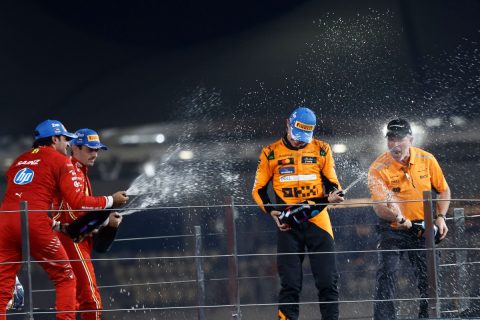As the curtains draw on the 2024 Formula 1 season with the Abu Dhabi Grand Prix, the Yas Marina Circuit remains a hotbed of activity. Just two days after the adrenaline-fueled race, teams and drivers are poised for the crucial post-season test scheduled for 10 December. This event offers one last chance for track time before the winter break, continuing a tradition that dates back to 2009.
Understanding the Abu Dhabi Post-Season Test
The post-season test in F1 has been a staple since 2010, typically held at Yas Marina following the season finale. The test spans a full day and is divided into morning and afternoon sessions, allowing teams to glean final insights from their current cars before turning the focus to the future.
While not all the 20 F1 drivers are required to participate, teams have the interesting task of balancing who drives each car. Typically, one car is designated for a young driver with fewer than two Grand Prix starts, giving upcoming stars a taste of F1 action. The other car is reserved for those with a valid superlicence and is primarily used for Pirelli tyre testing, often shared between a team’s current drivers.
In 2023, notable participating drivers included Fernando Alonso and Lance Stroll, who shared the track for Aston Martin. Meanwhile, the then-reigning Formula 2 champion Felipe Drugovich enjoyed a stint behind the wheel, showcasing the vital role of the test in nurturing new talents.
Why the Abu Dhabi Test Matters
Despite the end of the racing season, the post-season test holds great significance. One of its main functions is facilitating transitions for drivers set to join new teams. For instance, in 2022, Alonso immediately went from Alpine to Aston Martin, acclimatising himself to new surroundings before the formal start of the next season.
This test is not just a simple run-through; it’s a highly strategic event. Each second of track time counts, providing teams with invaluable data. For teams and drivers, this opportunity is essential, especially with pre-season testing limited to just three days, set for late February in Bahrain.
Who’s Taking Part in 2024?
The upcoming post-season test in Abu Dhabi will feature an array of young and seasoned drivers, some familiar with the F1 environment and others on the brink of it. Among the names expected to participate are Andrea Kimi Antonelli and Gabriel Bortoleto, who will make their F1 race debuts in 2025. Their participation in this test serves as a vital step in their progression, offering a rare chance to experience F1 machinery outside the pressure of competition.
Seasoned driver Carlos Sainz, departing from Ferrari, will team up with Williams for the test alongside Luke Browning. Another notable change is Nico Hulkenberg’s return to Sauber after leaving Haas, showcasing the dynamic nature of driver line-ups post-season.
Testing Without Public Broadcast
Fans keen to follow the Abu Dhabi post-season test will not find it broadcasted live. Instead, Autosport and similar platforms offer comprehensive coverage, providing insights and updates as teams conclude their activities for the year.
2024 Test Driver Line-Up
| Team | Tyre Test Allocation | Young Driver Allocation |
|---|---|---|
| Alpine | Jack Doohan | Paul Aron |
| Aston Martin | Lance Stroll | Felipe Drugovich/Jak Crawford |
| Ferrari | Charles Leclerc | Antonio Fuoco/Arthur Leclerc |
| Haas | Esteban Ocon | Ryo Hirakawa |
| McLaren | Lando Norris/Oscar Piastri | Patricio O’Ward |
| Mercedes | George Russell | Andrea Kimi Antonelli |
| RB | Liam Lawson | Ayumu Iwasa |
| Red Bull | Yuki Tsunoda | Isack Hadjar |
| Sauber | Nico Hulkenberg | Gabriel Bortoleto |
| Williams | Carlos Sainz | Luke Browning |
This comprehensive line-up affirms the Abu Dhabi post-season test’s critical role in shaping the forthcoming F1 season, highlighting the mix of emerging talent and experienced drivers taking strides toward a new era in the sport.









